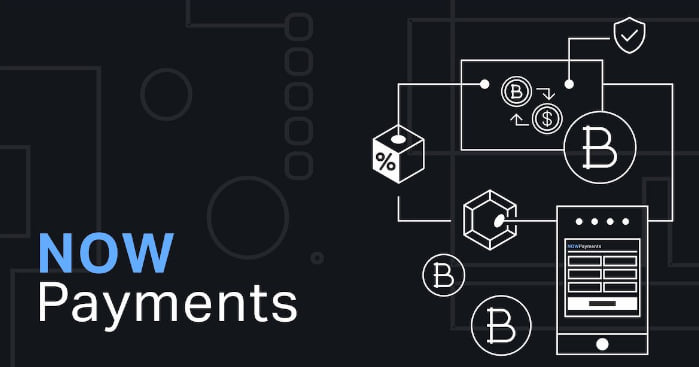Accepting cryptocurrency payments like Bitcoin on your website or blog can be a smart move. As digital currencies become more mainstream, having the option to pay with Bitcoin can attract new customers and tap into a growing market. Integrating Bitcoin payments isn’t too complicated either with several easy options available.
If you’re also interested in learning more about bitcoin trading, go to 1k daily profit for a complete guide.
In this beginner’s guide, I’ll walk through the key steps for accepting Bitcoin on your WordPress or other CMS-based website. Whether you’re running an online store, sell digital services, offer membership subscriptions, or simply want to accept donations, Bitcoin can work for various business models.

Let’s get started and I’ll show you how to easily set up Bitcoin payments on your site.
Major Ways to Accept Bitcoin Payments
There are a few popular methods to integrate Bitcoin payments into your website. Here are the main options to consider:
Use a Cryptocurrency Payment Processor

Just like traditional payment processors, crypto processors like BitPay and CoinPayments connect your site to payment networks to accept digital currencies. This approach is easy to set up as a plugin or extension on sites like WordPress, WooCommerce, and others. Transactions are handled seamlessly in the background.
With a crypto processor, you don’t need to handle or store any Bitcoin yourself. The processor receives the payment in Bitcoin, converts it to your preferred currency like USD, and deposits the converted amount into your business bank account. Some key advantages are easy integration, convenience, lower risks, and immediate payouts in fiat currency.
Use a Bitcoin Payment Button or Gateway
Another simple option is to add a Bitcoin payment button or gateway like Coinbase Commerce or Blockonomics. This lets you generate and display Bitcoin wallet addresses on your site for users to send payments to. The gateway monitors the blockchain to detect when payments are received. You can then choose to convert Bitcoin to fiat currency or keep it as Bitcoin.
Payment buttons give you more control compared to processors but require some manual work to monitor payments and payouts. Make sure to use a reputable provider.
Accept Direct Bitcoin Payments In Your Own Wallet
You can also accept Bitcoin directly into your own wallet by displaying your Bitcoin wallet’s public address or QR code on your website. This gives you full control over payments, eliminates third-party fees, and lets you accumulate Bitcoin.
However, you’ll need to manage the actual Bitcoin funds, monitor for payments, and handle the payout process yourself. So consider using a dedicated business wallet from a provider like Copay or Bitcoin Core instead of an exchange wallet.
Which Option Should You Choose?
There are good reasons to use each approach depending on your business model, tech stack, and preferences. Here are some key factors to consider:
- Convenience – Payment processors offer the easiest integration and user experience. No need to handle any crypto yourself.
- Costs – Direct Bitcoin payments avoid any third-party fees but require more hands-on management by you. Gateways and processors charge competitive fees per transaction or monthly.
- Payouts – With direct Bitcoin payments, you’ll need to manually convert to fiat currency and initiate payouts. Processors can auto-convert and deposit payouts into your bank account.
- Risks – Direct Bitcoin storage carries risks like lost wallet keys. Third parties handle security for you but evaluate providers carefully.
- Control – Direct Bitcoin acceptance gives you full control. But for beginners, a processor offers a simpler starting point.
Consider which model aligns closest with your business needs and technical abilities. You can always start with a processor and later shift to direct Bitcoin payments.
How to Set Up a Cryptocurrency Payment Processor

If you want the easiest possible setup, using a cryptocurrency payment processor is a great choice. I’ll explain how to quickly integrate a processor like BitPay into your WordPress site.
Step 1 – Sign Up for a BitPay Merchant Account
First, you’ll need to create a BitPay merchant account, which is free. This will generate your BitPay merchant API keys which are needed to activate the plugin.
Make sure to enter your business’s real name and address when signing up. This is required for BitPay accounts.
Step 2 – Install the BitPay Payment Plugin
In your WordPress dashboard, search for and install the official BitPay payment plugin. This seamlessly incorporates BitPay into your site.
Alternative ecommerce plugins like WooCommerce also offer built-in BitPay integration. The steps are very similar across most platforms.
Step 3 – Configure the BitPay Plugin
After installing the plugin, navigate to the BitPay settings in your dashboard. Paste your BitPay API keys here to activate the integration.
Choose settings for:
- Transaction speed – Set how many blocks need to confirm before considering a Bitcoin payment complete.
- Currency conversion – Select whether to convert Bitcoin to USD or another currency automatically.
- Payment notification – Get emails when payments are received.
Step 4 – Enable Bitcoin Payment Option
To display the Bitcoin payment option, go to the payment settings in your dashboard and choose the option to accept Bitcoin payments.
Users will now see a Bitcoin payment choice at checkout or when making purchases, donations, etc. It’s that easy to get started accepting Bitcoin!
How to Add a Bitcoin Payment Button
Adding a simple payment button from a provider like Coinbase Commerce is another fast way to take Bitcoin payments. Here’s a quick rundown of how to integrate Coinbase Commerce:
Step 1 – Create a Coinbase Commerce Account
Go to commerce.coinbase.com and sign up for a merchant account. Make sure to use a valid business email and details.
Step 2 – Generate the Payment Buttons
In your account, create a new payment button for your product, service, donation page, etc. Customize the title, description, currency, and more.
This will generate the necessary embed code. You can create multiple buttons for different items if needed.
Step 3 – Add Payment Button To Your Site
Copy and paste the embed code on your WordPress, Weebly, Squarespace, or other site page to display the live payment button.
That’s all you need to start collecting Bitcoin payments into your Coinbase Commerce account and wallet.
Pros and Cons of Accepting Bitcoin Payments
There are several potential benefits, along with a few limitations to keep in mind when accepting Bitcoin payments:
Benefits
- Attract customers interested in cryptocurrency and blockchain technology
- Tap into a fast-growing market as digital currencies gain mainstream adoption
- Allows global payments from any country since Bitcoin is decentralized
- Low fees compared to credit card processors and cross-border payments
- No risk of chargebacks or payment fraud
- Bitcoin payments are irreversible just like cash transactions
- Can be converted to your local currency immediately through payment processors
Limitations
- Price volatility makes Bitcoin less stable currently compared to fiat currency
- Limited legal protections or recourse using cryptocurrency
- Need to stay compliant with regulations which are still evolving
- Some customers may still prefer using familiar payment methods like cards
- Handling Bitcoin payments directly can be complex for beginners
- Risks of security breaches or loss of wallet access
The benefits often make accepting Bitcoin a worthwhile option for many businesses. But be aware of the limitations and incorporate risk management practices to operate safely.
Conclusion
Accepting cryptocurrency payments can be rewarding for online businesses, retailers, freelancers, and nonprofits. With digital assets becoming a more mainstream form of value exchange each year, the benefits usually outweigh the limitations.
For beginners, using a cryptocurrency payment processor like BitPay is the best way to get started with minimal complexity. You can always shift towards direct Bitcoin acceptance later.
Remember to evaluate your business model, compliance needs, tax implications, and risk factors when making the decision. Used properly alongside prudent financial management, integrating Bitcoin payments can expand your customer base and tap into new revenue opportunities.
Frequently Asked Questions (FAQs)
Is it legal to accept Bitcoin payments?
In most countries, yes it is completely legal to accept Bitcoin payments just like any other currency or asset. However, check your specific country’s regulations and make sure to pay taxes on any income or capital gains.
Do I need a business license or registration to take Bitcoin payments?
In most cases, no special licensing is required just for Bitcoin transactions. Operating legally as a registered business for tax and regulatory purposes is recommended.
How much do Bitcoin payment processors charge in fees?
Fees vary across providers but are generally 1% or less per transaction which is lower than credit card fees. Some may charge monthly membership fees depending on account type and features.
Can customers reverse or chargeback Bitcoin transactions?
No, Bitcoin transactions are irreversible like cash once confirmed on the blockchain. This eliminates chargeback fraud risks for merchants.
How long do Bitcoin payments take to process?
Initial payment confirmation takes roughly 10 minutes on average. But waiting for several confirmations (up to an hour) is recommended to mitigate blockchain risks. Fast settlement solutions are also emerging.
Can I convert Bitcoin revenue to local fiat currency?
Yes, through crypto exchanges or instant conversion via payment processors, you can convert Bitcoin to USD, EUR, etc conveniently. Many methods support auto-conversion too.
Do I need a crypto wallet to accept Bitcoin on my business website?
If using a payment processor, you don’t need to handle the Bitcoin wallet yourself. In case of direct Bitcoin acceptance, you’ll need to set up a secure, dedicated business wallet.
Are Bitcoin payments traceable for accounting and tax purposes?
Yes, all Bitcoin transactions are visible on the public blockchain permanently. Proper accounting practices are still required for compliance, however.
Disclosure: The articles, guides and reviews on BlowSEO covering topics like SEO, digital marketing, technology, business, finance, streaming sites, travel and more are created by experienced professionals, marketers, developers and finance experts. Our goal is to provide helpful, in-depth, and well-researched content to our readers. You can learn more about our writers and the process we follow to create quality content by visiting our About Us and Content Creation Methodology pages.
